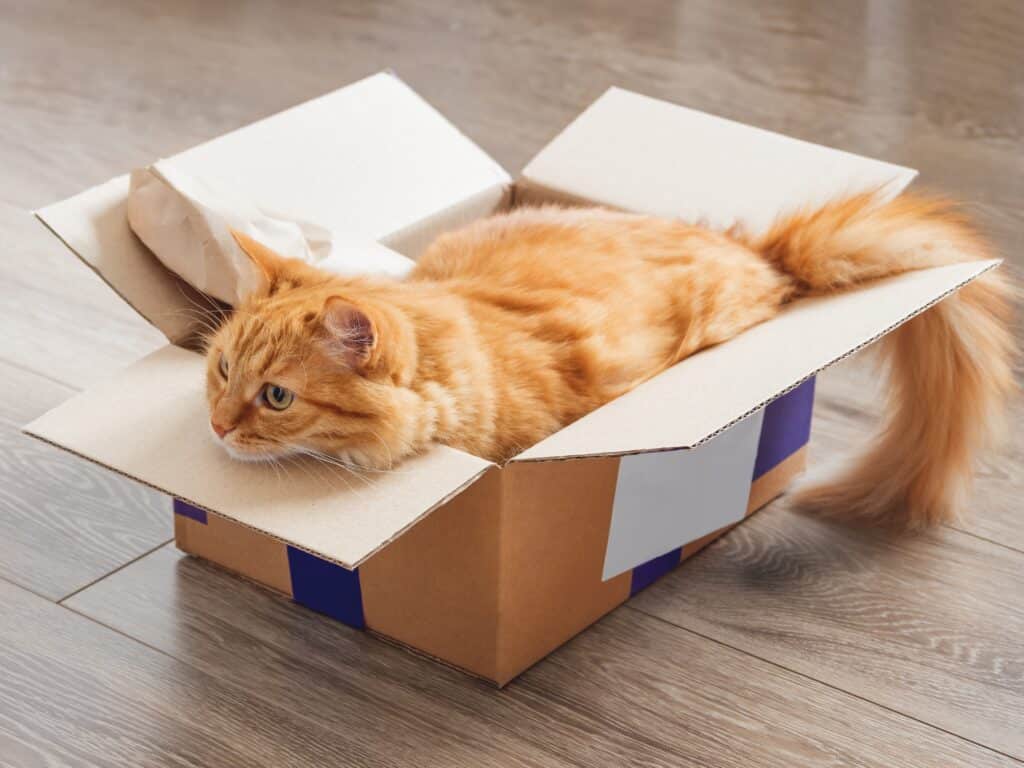Moving house is stressful enough, even if you’re an organised person who has moved many times. Moving house with an outdoor cat adds to that challenge. So how do you move your cat so that the experience is less stressful for everyone?
The simple answer is every cat is different. Some are more adaptable than others, but there are a few important steps to take for any cat to help them make the transition to a new home. Here are our tips for your next move.
- Remove your cat from the moving process
Cats are creatures of habit. They know when something is up. When moving any pet, it’s important to normalise the moving process for them if you are packing yourself. Let the cat sniff the boxes, play in the box and accept it as a normal part of the home.
As you approach moving day, it’s wise to put your cat in a cattery. Your cat will get stressed when a moving truck arrives and turns its world upside down. Leave the cat in the cattery until you have moved to your new home and unpacked enough boxes to be reasonably settled.
- Select a cat room to begin the transition
Pick a cat room in your new home, preferably a small room without outside doors which doesn’t get used often, like a spare bedroom or the laundry. Set the room up for your cat with food, water, kitty litter and their favourite bed. Create a safe nook, such as in a sheltered corner of the room. Get this organised before you collect your cat from the cattery.
- Release your cat into your cat room
Carry your cat into the room you have prepared and close the door before you release it. Stay in the room with your cat while it sniffs the new surroundings. For outdoor cats, it’s important to make them feel safe and secure. Pet your cat if it wants attention, and show it where you have put its food, water and kitty litter. Don’t let your cat out of this room yet, so wait until it has settled before you make a discreet exit.
- Keep your cat contained for three days
Most cats acclimatise slowly, so they need time to adjust to their new surroundings. This is also true of outside cats, despite them disliking being kept in an enclosed space. Your cat will adapt better and be happier if you keep it contained in one room for three days. Visit your cat regularly, and pay attention to its behaviour. You’re looking for signs that it’s getting comfortable. Give your cat a few extra treats during this time.
- Release your cat into the house
Once your cat is comfortable in its room, you can release it into the house, but don’t let it go outside. Let your cat explore the house in its own time. Tell everyone to be diligent about keeping outside doors and windows closed. This is the most common time that people lose their cats. As a rule of thumb, keeping your cat inside for two weeks is the best way to help it adapt, acclimatise and feel safe in its new surroundings. During these two weeks, you can transition food, water, kitty litter and its bed to where they will normally be in your home.
- Introduce your cat to the outside
After two weeks, an outdoor cat will be keen to go outside. It’s important you introduce your cat to your new outdoors slowly. Supervise your cat as it explores the outdoor areas. If it looks anxious or like it will wander too far, pick it up and return to your home.
Your cat will explore more each time you go outside. If it jumps over the fence, try to stay nearby and call out to remind it of where you are so it can find its way back. Every outdoor cat is different, and you’ll know when it’s okay to let it out unsupervised.
Make sure you offer meals at the same time each day. Cats quickly learn when it’s time for dinner, so when your cat shows up at the door on time, you’ll know it has made the transition to your new home.
If you follow these guidelines, your outdoor cat will soon behave like it has lived at your new home for its entire life.
